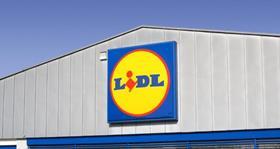
The UK food and grocery market is forecast to grow by 15 per cent between now and 2022, giving it a value of£213 billion, according to IGD’s latest forecasts.
The grocery research organisation predicted growth across all the major grocery channels, with the discounters set to put in a particularly strong performance, driven by ambitious store opening programmes, new store formats and range investment.
By 2022, the charity estimated that one in every £7 will be spent at a discounter, up from one in every £9 at present.
Online remains fastest-growing channel
Other key findings from the new data are that:
- Online is set to remain the fastest-growing channel, up 55.8 per cent, but growth will perhaps be slower than in previous years as retailers also look to drive growth through their larger store and convenience formats.
- Both discount and convenience have a more optimistic outlook than in previous years. These two channels are forecast to grow the second and third fastest respectively of all the grocery channels.
- There is a more positive outlook than before for both supermarkets and hypermarkets. Growth will be driven by a combination of inflation and investment in the big store shopper experience.
According to predictions, supermarkets will remain the largest retail channel, growing from a value of £86bn to £91.1bn; convenience stores will stay in second place, expanding from £40bn to £47.1bn; and discounters will still be the third-biggest channel with a 49.8 per cent increase in value from £20.1bn to £30.1bn.
Inflation driving growth
IGD chief executive Joanne Denney-Finch said:“Our market growth figures to 2022 are higher than last year’s forecast, primarily driven by resurgent inflation following three years of sustained deflation across UK food and grocery.
“All channels are set to see growth, but we anticipate that encouraging shoppers to trade up or buy more will remain as competitive as it always has been – and potentially even more so, given the challenging economic outlook.
“There’s a revolution underway in food and grocery, in terms of what, how and where shoppers do their shopping. On average, shoppers say they use around 12 different stores every month – and in the future, we will have an even greater choice in what, where and how we buy our food.”
‘More spontaneous but better planned’
Besides this diversification in store choice, the charity expects consumers to be “more spontaneous but also better planned” with their grocery purchases. Denney-Finch predicted that consumers would be “experimental and eager for new products and experiences”, but when it comes to grocery staples, the charity anticipates that more and more shoppers will order on subscription.
A quarter (24 per cent) of British shoppers said that in the next two to three years it was likely they would use an online subscription service to have their staples delivered.
Discounters boost their offer
On thesubject of discounters, Joanne Denney-Finch said the channel would “contribute most to the cash growth in the market over the next five years, as [the discounters] continue to open new stores and keep improving the shopper experience with new additions such as food-to-go, self-checkouts and larger stores.”
She added: “Four in five (79 per cent) shoppers say they have visited a variety discounter for some of their grocery shopping in the last month, while two-thirds (62 per cent) say they used a food discounter.
“And almost three-quarters (70 per cent) of food discount shoppers say the quality of the products they buy from these stores has improved over the last couple of years.”
Despite a slowdown in online sales growth, the charity expects ‘digital natives’ – people who have grown up using technology in many aspects of their lives – to help sustain future expansion.
In the last month, 40 per cent of all British shoppers say they have bought some of their food and groceries online, according to IGD. That figure is expected to rise to 60 per cent in the next two to three years.



